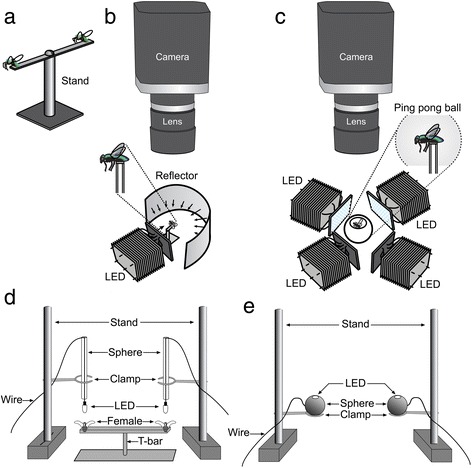Fig. 1.

Graphical illustrations of experimental designs. a T-bar (vertical stand: 3.5 cm tall; horizontal bar: 7.5 cm long) with two Lucilia sericata flies mounted on their abdominal ventrum to leave their legs without support and thus induce a wing fanning response. b, c Set-up for high-speed video recordings of an abdomen-mounted, wing-fanning fly under direct light (b) or diffuse light (c) provided by one or four 100-watt cool light-emitting diodes (LEDs; see Methods for further details). d Mounted LEDs producing pulsed or constant light directed on to the immobilized wings of paired abdomen-mounted flies. e Black acrylic sphere holding a white-light LED directed upward; sanding the lens ensured that the emitted light was visible to flies from many viewing angles rather than from the narrow viewing angle that the lens otherwise creates
